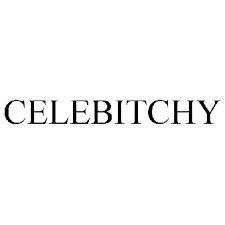ARTICLE AD
Among social media’s most sinister elements — providing a platform for misinformation, encouraging trolling, setting unrealistic ideals — is the crime of foisting this Stanley cup fanaticism upon us. It was TikTok in particular that fanned the flames for a $45 40 oz stainless steel water bottle, anointing the Quencher model the one true cup. People ran amok at Target stores to snatch limited edition colors (red and pink) and a woman in California was recently arrested for stealing 65 Stanleys from a single store. Well, TikTok crowneth, and TikTok taketh away. Online videos have been popping up claiming that Stanley cups have lead in them, so many that reps for Stanley have responded with a formal statement:
Stanley’s Quencher cup has become a viral sensation over the past year — to the point that customers are door-busting department stores and stampeding down aisles to get their hands on limited-edition colors. However, safety concerns about the trendy tumblers have surfaced online, and Stanley sent a firm message regarding claims its cups contain lead.
A rep for Stanley recently dispelled speculation in a statement to WCNC Charlotte.
“Please rest assured that no lead is present on the surface of any Stanley product that comes in contact with you or the contents of your container,” the rep told the publication. “Every Stanley product meets all U.S. regulatory requirements, including California Proposition 65, which requires businesses to provide warnings to Californians about heavy metal and chemical exposure.”
The statement from Stanley comes after a number of videos on TikTok and other social media platforms claimed its cups have lead in them.
“So just confirmed that the Stanley is leaded,” one TikTok user captioned a video from March 2023. In the clip, she used a LeadCheck swab that turned pink after making contact with the bottom of a Stanley cup — indicating the lead present is bioavailable.
Similar videos showed tests with the same result, while others indicated no lead was present.
Thankfully, Stanley stans have nothing to worry about. Customers can continue enjoying and collecting their favorite lead-free beverage containers to their hearts’ content.
I’ve watched a sampling of these TikTok videos now and have a few thoughts. Let’s start with the lead tests themselves — in the videos I saw, the test kits fly by too fast to ID them, nor are they tagged or identified by the creators. The particular test kit is worth noting because there are only three that the EPA recognizes, so I would want the kit confirmed up front. Another critical factor is what part of the cup is tested. Some people were swabbing inside the cups, a good place as the presence of lead there would obviously contaminate the beverage you’re drinking. That would be bad. But some people were testing a small spot on the bottom of the cup, and those tests confirmed the presence of lead. But it’s not the Aha! moment the Tiktokkers think it is. Because Stanley plainly states on their FAQ page that their bottles use “an industry standard pellet to seal the vacuum insulation at the base,” and that piece includes some lead. But the pellet is covered by stainless steel, meaning it truly is protected from touching your drink. And if for some reason the pellet does become exposed on the bottom, it can be replaced under Stanley’s lifetime warranty.
Apparently it’s an old manufacturing practice to use lead to solder the vacuum seal between the layers of an insulated cup. But plenty of companies are starting to use different methods to seal these cups because… lead is dangerous! If we don’t want it in paint on our walls, why would it be ok to have it so close to our drinking water? There are no safe levels of lead, and it’s considered even more toxic to children because lead stays and grows in the body. It’s good to hear that Stanley is confident in the strength of their seals, and that they’re willing to replace the seal should the pellet become exposed. Long term, though, I’d say it’s time (if not past it) for them to switch practices.

 9 months ago
58
9 months ago
58 

